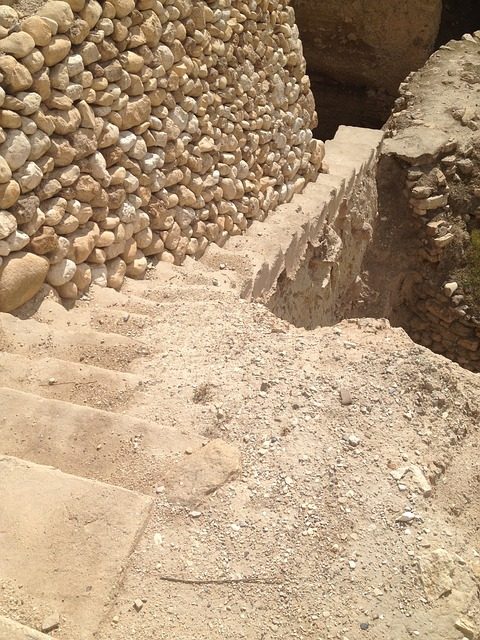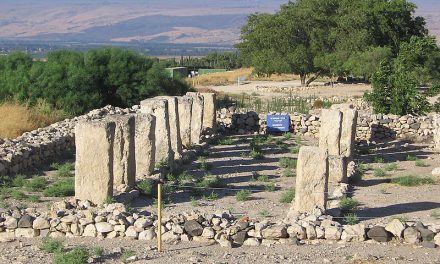Kathleen Kenyon was one of the archaeologists who did a lot of study on Jericho in the 1950’s, but much has been discovered since then. These discoveries from her and others have reinforced the events of Joshua and the walls of Jericho.
1) The city was discovered to have been heavily fortified. This is exactly what Moses tells the people (Deut 9:1).
2) In-depth analysis show that the city was destroyed around 1400 BC around the time the Israelites entered the land (Bryant G. Wood, Did the Israelites Conquer Jericho?, Biblical Archaeology Review 16(2):44–58, March–April 1990.)
3) The Canaanite homes were found with large food supplies left in attack (affirmed by Kenyon and later archaeologist John Garstang). This coincides with the Scripture that says it was harvest time (Joshua 6:20).
4) The inner wall fell in on itself. Piles of bricks were found on the west side of the city.. (Kathleen M. Kenyon, Excavations at Jericho, 3:110, London, British School of Archaeology in Jerusalem, 1981.) An Italian excavation team found the same thing in 1997 on the southern side of the city.
5) German excavations from 1907-1909 showed that the city wall on the north side did not collapse. Leaning against that wall were the houses of the poor people (“The Hebrew phrase in Joshua 2:15 is beqîr hahômah. Usually qîr means a small wall, but can also indicate the vertical surface of a wall. Brown, Driver and Briggs” lexicon suggests this for Joshua 2:15 (p. 885), and in this case the preposition be would mean “against’(p. 89). Thus, literally, “her house [was built] against [the] vertical surface of the [city] wall.””)
This is how Rahab survived the collapsing of the other walls in that her section of the wall did not crumble. (Ernst Sellin and Carl Watzinger, Jericho die Ergebnisse der Ausgrabungen, Osnabrück, Otto Zeller Verlag, p. 58, 1973 (reprint of the 1913 edition).)
From this side of the city the the hills of Judean wilderness were easily accessible. Which is exactly where Rahab directed the spies to hide
6) The city had an inner wall and a lower retaining wall. The retaining wall itself was 12-15 feet high. When the inner city walls collapsed, the brick and debris formed a natural ramp into the city. This is exactly what the Scriptures say that the people went “up” into the city to take it (6:20).
7) The Israelites burned the city and everything in it. Kenyon clearly discovered about a meter of ash where the city had been burned:
“The destruction was complete. Walls and floors were blackened or reddened by fire, and every room was filled with fallen bricks, timbers, and household utensils; in most rooms the fallen debris was heavily burnt, but the collapse of the walls of the eastern rooms seems to have taken place before they were affected by the fire” (Kenyon, Excavations at Jericho, 3:370).
8) The grain was clearly found throughout the city. But oddly, it wasn’t touched. This is very strange as food was money and could be bought and sold. But here we see the obedience of the Israelites who were told not to touch anything as it was to be set apart for the Lord (6:17-18). Only Achan sinned by taking some of the silver and gold for himself (Joshua 7).
9) The jars of grain that were found in the city were shown to be full. This indicates clearly that there was no long-belated seige, but that the city fell quickly which matches the Bible account of 7 days (Joshua 6).
Clearly the Biblical archaeology supports the account of Joshua and the Israelites. It actually affirms it in many ways. You can still go to Jericho this day and see the ruins. I’ve been there and was able to see some of these things. It’s amazing all that happened.
Some will say it was just an earthquake. But that would be even more amazing. An earthquake right at the moment that the Israelites shouted? And an earthquake that left Rahab’s part of the wall intact? Even more miraculous.
Either way, God did something extraordinary. Right there in the first city they conquered by faith.
(This article is a summation from here: https://answersingenesis.org/archaeology/the-walls-of-jericho/)






